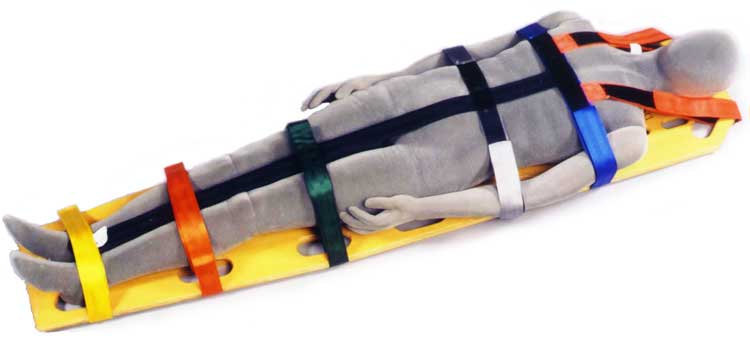In Emergency Medical Services (EMS), when a patient with a suspected or confirmed back injury is diagnosed, EMS personnel need to respond quickly and use specialised first aid equipment, such as a spine stretcher, to ensure that the patient is dealt with appropriately and in a timely manner.

Below is a step-by-step guide on how to respond to a back injury with a spine stretcher in a real-life situation:
1. Initial Assessment and Stabilization
When the EMS team arrives at the scene, the first task is to conduct a thorough assessment of the patient, including a determination of the likelihood of spinal injury. They begin by ensuring that the patient's vital signs are stable, such as maintaining breathing patency, giving necessary oxygen therapy support, and monitoring key indicators such as blood pressure and heart rate. Immediate neck immobilisation measures, such as the use of a neck brace, are implemented for patients with suspected spinal damage.
2. Safe Transfer to a Spine Stretcher
A spine stretcher is a special piece of emergency equipment designed for patients with possible or known spinal injuries, featuring a hard, flat support surface and a series of securing strap systems that provide full spinal immobilization of the neck, back and limbs, preventing twisting and shearing forces that may occur during handling. The stretcher is placed in a suitable position next to the patient, and then several people work together to ensure that the patient is transferred slowly and smoothly to the spinal stretcher while keeping the patient's spine straight.
3. Spine Immobilization and Handling
On the stretcher, the first-aiders will use special fixation straps to gradually and firmly fix the patient's head, chest, pelvis and lower limbs to the spinal boards to ensure that the patient's spine remains stable and does not suffer from additional pressure or rotation due to bumps or braking manoeuvres during the transport process. Throughout the entire process, emergency personnel follow strict protocols to ensure that each step is performed in a way that minimises the risk of damage to the spine.
4. Subsequent Transport and Monitoring
Once immobilization is complete, the EMS team will safely transfer the patient, along with the spine stretcher, to an ambulance or other means of transport using appropriate lifting methods, such as over-the-shoulder, towing or lifting equipment. During transport, they will continuously monitor the patient's vital signs to ensure safety throughout the transfer process, while minimising discomfort and potential risks to the patient.
In summary, through the skilled and precise use of the spine stretcher, a critical piece of EMS equipment, EMS is able to not only provide safe and efficient on-scene treatment to patients with back injuries in the first instance, but also effectively prevent spinal injuries from worsening during subsequent transport, laying a solid foundation for saving patients' lives and reducing the risk of disability.